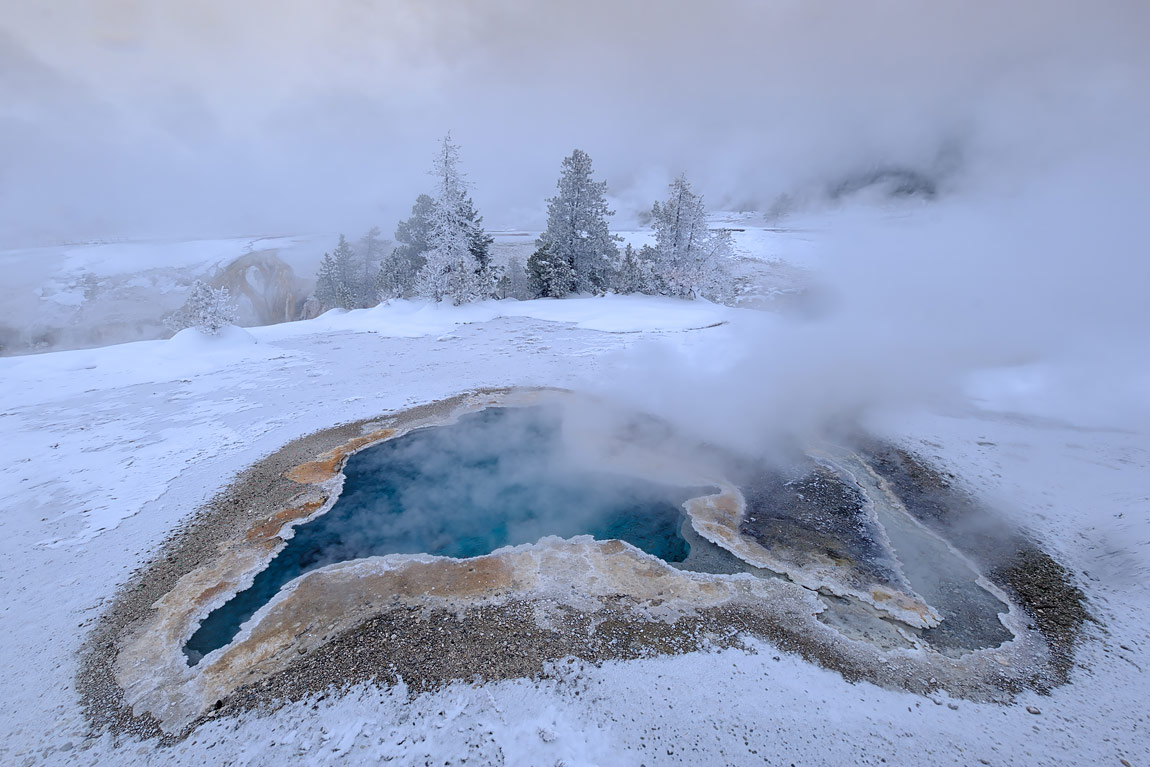Winter in Yellowstone National Park transforms its landscape into a snowy wonderland full of active wildlife, contrast, extra steamy geothermal features, and…no cars. On my week-long park tour last January, I was treated to a landscape enveloped under heavy snowfall and sub-zero temperatures.
The tour emphasized wildlife, but heavier than normal snowfall caused elk and other animals to leave the park's elevations for food lower down. So, we shifted our attention to the landscapes that make Yellowstone unique. The location for this image was among them.
Blue Star Spring is in the Upper Geyser Basin along the Firehole River. It sits in the shadow of its iconic neighbor, Old Faithful Geyser. In the winter months, I saw surprisingly few people make the short walk to the back of Old Faithful to see the string of springs and geysers. The spring has not erupted in over 20 years, but its deep, clear, blue water is a sight to behold. The water in this spring is too hot for the colorful bacteria found in some of the other hot springs.
The spring is very close to the restricted pathway, requiring an 8-16mm lens fully wide. The snowy landscape provided a nice framing of the pool. In most winters, the snow doesn't come this close to the margins of geothermal features due to the warm ground temperature. When walking on elevated paths in sub-zero weather, it is advised to wear something like YakTrax on your shoes for better traction.
Winter in Yellowstone will not disappoint if a visitor is willing to be flexible with the weather.


